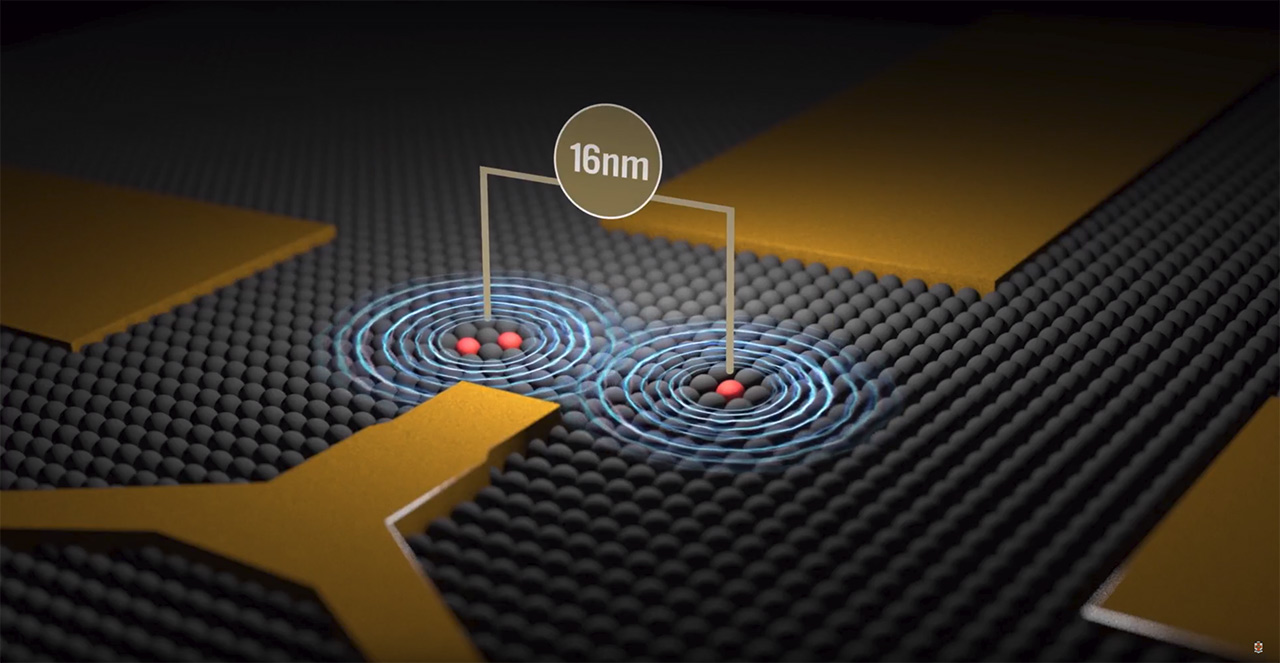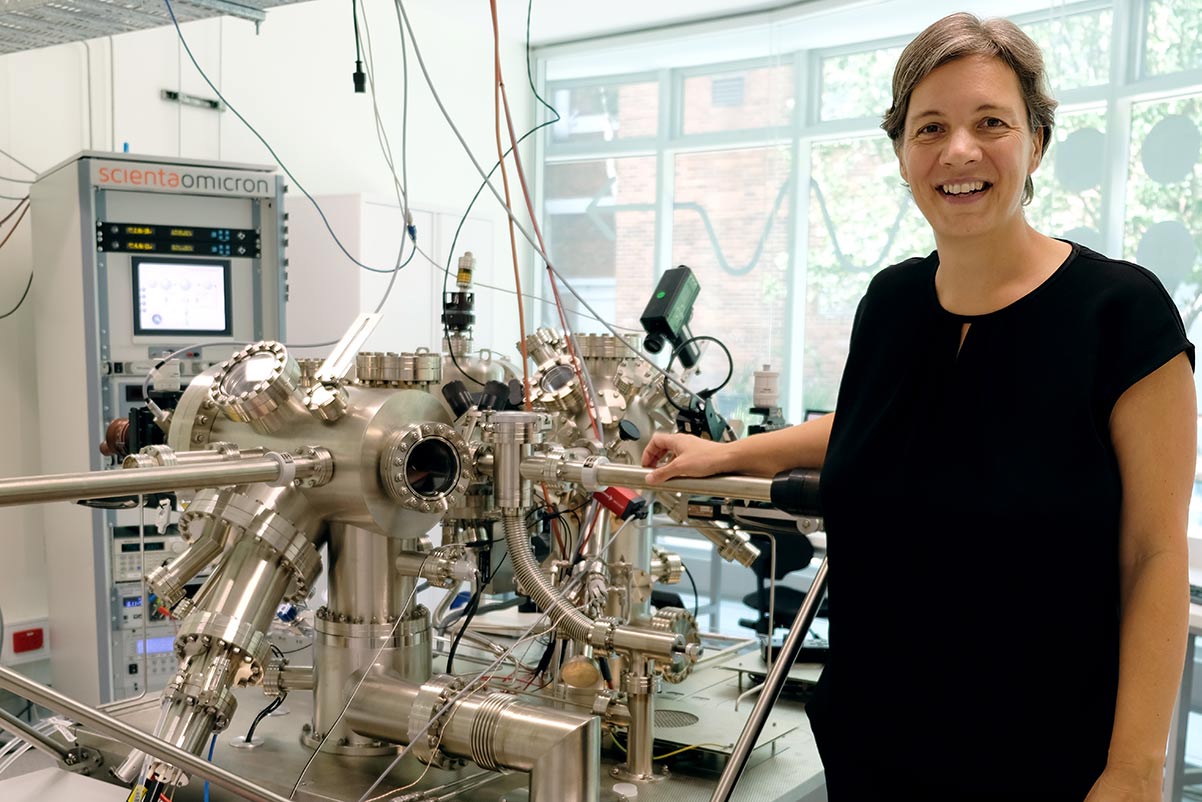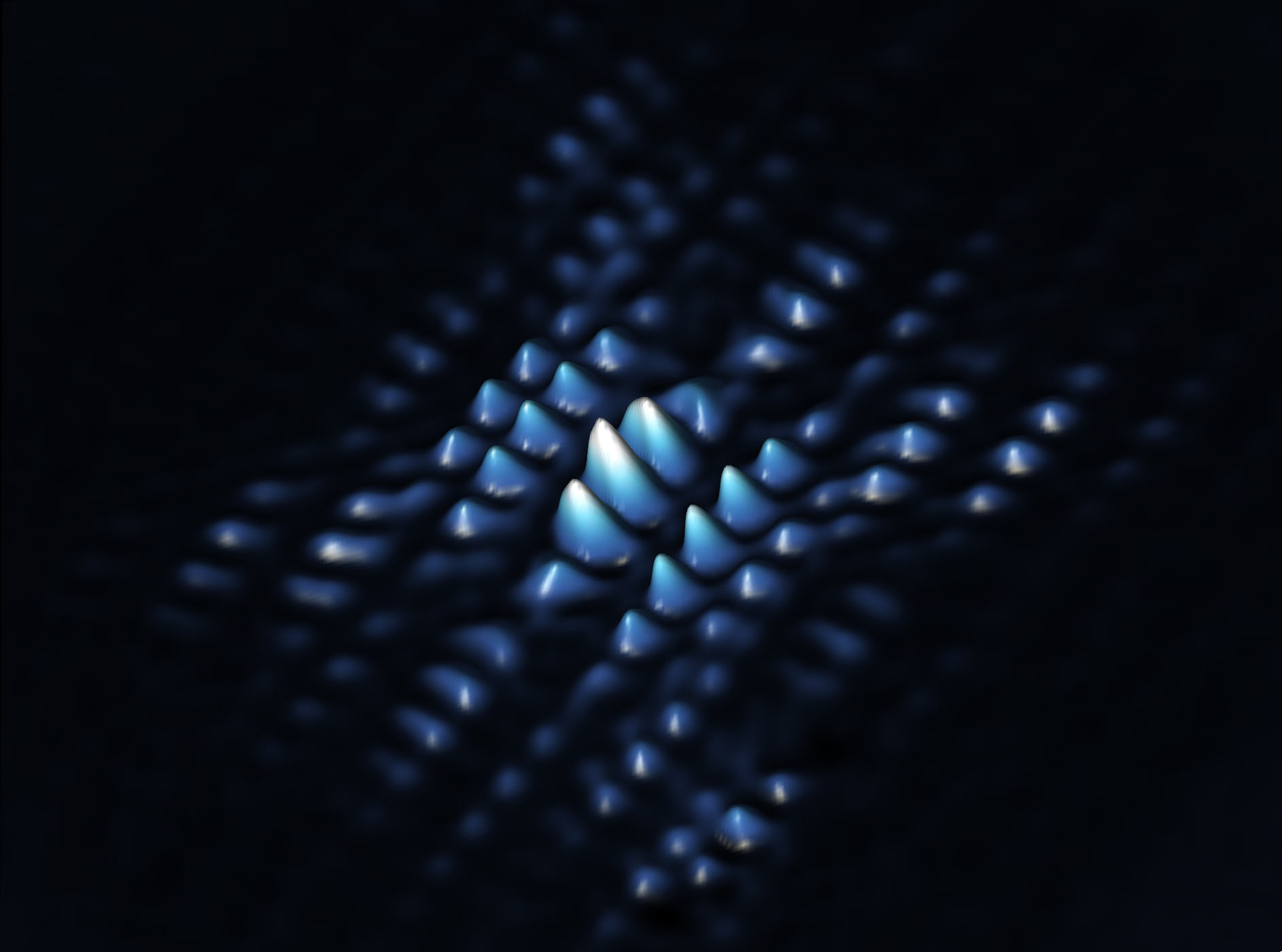Watching single atoms
Scientists from UNSW have taken a significant step forward in the pursuit of quantum computers. They have successfully demonstrated two electrons positioned on precisely placed but separated atoms, ‘talking’ to each other through space.
The correlation between these quantum bits (or qubits) is exciting news as it paves the way for the generation of a two qubit ‘gate’, one of the key fundamental building blocks of a functional quantum computer.
Quantum computers
Quantum computers promise to fundamentally change how computers of the future will work, with estimates that these futuristic devices will be able to complete tasks in minutes that would take one of today’s supercomputers thousands of years.
The key to this speed increase is that, unlike a classical (current) computer that must perform each calculation one after the other, quantum computers will perform tasks in a massively parallel way, effectively looking at every possible outcome for a given problem at the same time. Consider quantum computers the ultimate multi-tasking system.
A qubit?
So, what is a qubit? The term really is only there to differentiate a ‘quantum computer bit’ from a classical computer ‘bit’ (which is short for ‘binary digit’). In classical computers, a bit can take the value of 0 or 1 (off or on).
In other words, a qubit is just the smallest part of how a quantum computer can store or process data. One of the quirks of qubits is that they are expected to not only take the value of 0’s and 1’s, but another weird value that implies both on and off at the same time. Spooky!
The device
While there are several schools of thought on how functional quantum computing will be realised, the recently developed device is silicon based and uses phosphorus atoms as the qubits.
The reported device has two qubits—one consisting of a single phosphorus atom, the other held by a pair of very closely spaced phosphorus atoms. To be exact, the information is stored on a single electron on each qubit, and it is the correlation between these two electrons that is the breakthrough.
If one electron is in one state (let’s call it the ‘up state’), the linked second qubit electron is in the opposite ‘down state’. If the researchers switch one qubit, the other changes. This correlation is essential for quantum computers to function and carry out complex calculations.

The experiment that disagreed with theory
The distance between the two qubits is 16 nanometres (16 billionths of a metre). For reference, the size of a single silicon atom is 0.2 nanometres. This is an insanely precise placement of atoms.
Previous quantum theory calculations had suggested that the qubits should be separated by around 20 nm. The fact the discovery doesn’t quite match the theory is fantastic: it shows us how much we don’t yet know about how these systems work. Theoreticians will now investigate explanations for the discrepancy and improve the mathematics that describes these interactions.
The tech
The discovery was only made possible by using very precise equipment which allows the researchers to place single phosphorus atoms with atomic precision exactly where they want them to be on a wafer of silicon.
But how could they place the three phosphorus atoms so precisely?
First, they made an atomically flat layer of silicon (they need 1100 °C and ultra-high vacuums), before treating that surface by depositing a layer of hydrogen atoms, which effectively stops the silicon atoms reacting with anything.
The team then used a technique known as scanning-tunnelling-microscopy (STM) hydrogen lithography, which is just a fancy name for a device that can pluck holes the size of single atoms in the surface. Using the STM, they remove single hydrogen atoms from the protective layer, one by one, to uncover the reactive silicon underneath.

Exposing the surface (with the holes or gaps in the hydrogen layer) to phosphine gas (PH₃) allows the unprotected silicon to react with phosphorus atoms, which are then incorporated into the silicon layer by another heating step (only 320 °C this time).
This can then be patterned alongside the electrodes needed to build the rest of the device.
By choosing exactly what hydrogen atoms to remove, they can control exactly where the phosphorus atoms are incorporated.
We can see it
A unique advantage of this approach is the ability to not only precisely build, but to also ‘observe’ the single atoms in the system. This gives researchers the capability to measure the precise location of the atoms, as well as directly image the interaction between the two qubits. The additional information gathered from the imaging is instrumental in informing future work in the field.

The future
The team believe that with this most recent work, they are ready to build a high-fidelity, two qubit gate. This type of gate is one of the key fundamental building blocks of a scalable, silicon-based quantum computer.
Of course, we are all awaiting a working, large-scale commercial quantum computer in our lounge room but when they arrive we probably won’t all have one. For one, most quantum computing devices work at about -273.10 °C (one twentieth of a degree above absolute zero), so they aren’t too suited to be used for our desktops or as smartphones. Rather, they will more likely to be useful as servers that organisations and researchers will be able to access to solve particularly difficult computational challenges.
It is significant progress for silicon-based quantum computing and reaches a fundamental milestone on the path to a functional quantum computer. A very exciting time for quantum research indeed.





